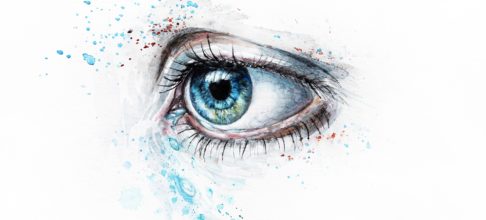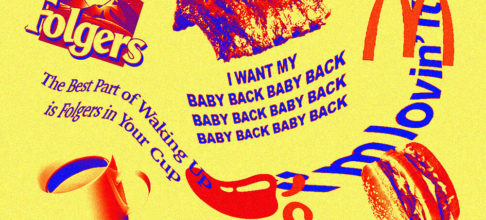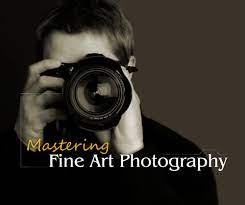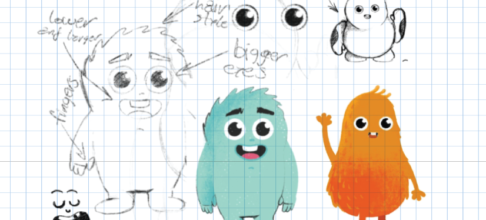Introduction
Animation is the technique by which a series of images or objects are manipulated to appear as a moving image. These objects may be drawn, painted, or modeled in 3D computer graphics software. An important part of the art of animation is the ability to create a character people can relate to and empathize with. The most common form of animation is 2D animation, which uses paper drawings or computer-generated imagery (CGI) to create movement in an object over time. However, there are other types of animation such as sand and claymation that use different mediums but still achieve similar effects
2.5D Animation
- 5D animation is a technique that allows for the creation of 3D graphics and environments, but does not include full 3D characters or objects. This type of animation can be used in games and movies, as well as commercials. 2.5D animations are often referred to as "hybrid" animations because they incorporate both 2D and 3D elements within them.
3D Animation
3D animation is a method of animation that uses 3D models, 3D motion capture, and 3D rendering. It is a part of the field of computer animation and digital art.
3D animation is often confused with 3D computer graphics, but they are not identical. Not all effects created in 3D animation are usually associated with photorealism and realistically modeled or shaded scenes; they can also be produced with different kinds of stylization or experimental techniques. 3D animations may also be created entirely with traditional hand-drawn 2D methods, or less often (e.g., stop motion), without any computer assistance at all; see Drawn-on-film animation and Stop motion#Filmography for examples.
The word "animation" was coined by French cartoonist Émile Cohl in 1908.[2] The process itself was invented by Winsor McCay in 1912 when he drew some sketches on paper which he then showed to an audience through a magic lantern.[3] His first film A Dream Of John Ball appeared that same year as did his first animated film Little Nemo (1911).[4] On July 17th 1992 Computer Animation became possible thanks to Pixar's short film Tin Toy[5], but it wasn't until 1993 when Nightmare Before Christmas (1993) came out that people started taking notice of this new medium.[6]
Sand Animation
Sand animation is a style of animation that uses sand as the medium for animation. The movement is created by moving a camera over the sand, which is then moved by hand to create the animation. The camera's movement can be manipulated in such a way that it will appear as if the sand were moving.
There are many variations on this technique, but they all follow these basic principles:
- Sand must be kept at a consistent temperature and humidity level so that it retains its shape when moved around; otherwise, it will just crumble apart or turn into mud after being exposed to extreme temperatures or humidity levels for too long.
- The camera must move slowly enough for each frame to capture some meaningful detail about how much has changed since the previous frame—this means that what's ultimately shown on-screen is not something like "a bunch of people walking past," but rather something more like "one person turned around while another person kept going straight ahead."
Motion Graphics
Motion graphics are used to tell a story, communicate information, or create an emotion. They often combine text and images together to create a cohesive whole. Motion graphics can be created using software or by hand.
Clay animation
Clay animation is a type of stop motion animation, in which objects and figures are animated by physically moving them frame-by-frame. This differs from other stop motion methods such as puppet animation or claymation, which use real objects. It also differs from computer animation, which can be done on a computer by manipulating pre-existing images instead of creating them from scratch. Claymation today refers to any sort of stop motion filmmaking using clay figures, though the term originally referred specifically to the stylized puppets used in Will Vinton's films—and thus "claymation" is sometimes used synonymously with "puppet animation". Clay animation has been around since the early days of cinema; its first major successes were Felix the Cat (1919) and The Adventures of Prince Achmed (1926).
Different types of animation
- 5D Animation
As the name suggests, 2.5D animation is two-and-a-half dimensional. This type of animation uses 3D art to create a more realistic effect. It's similar to CGI in that it's created on a computer, but instead of being fully rendered like CGI, it uses limited or flat shading artwork and then adds depth through additional layers and textures.
2D Animation
2D animation is the oldest form of animation and dates back as far as 1917 when its first short film called "The Haunted Hotel" was produced in Chicago by J. Stuart Blackton & Eadweard Muybridge (yes, that same Muybridge who pioneered motion photography). Since then, 2D has evolved in many different ways with new technologies developing over time such as cel or paper drawings; traditional cutout; stop motion claymation; Flash/digital ink & paint; etc.. The contemporary style will sometimes be referred to as hand drawn animation or traditional frame by frame animation which can also include digital coloring techniques such as watercolor painting using Photoshop brushes.
Conclusion
Animation is a very broad field, and it can be used for a variety of different purposes. While many people are familiar with traditional 2D animation, there are other types of animation that take advantage of new technology to create amazing visuals.










